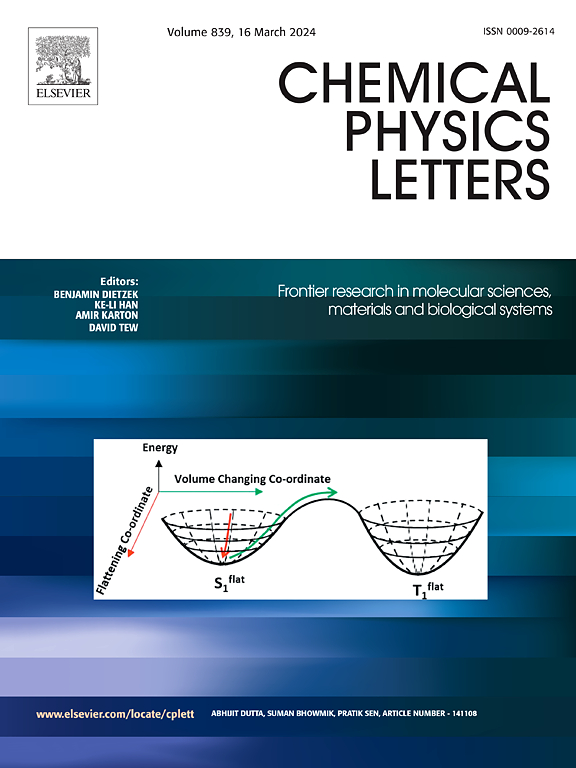二氧化氯的化学键:从头算研究
IF 2.8
3区 化学
Q3 CHEMISTRY, PHYSICAL
引用次数: 0
摘要
简单的ClO2 (C2v)自由基表现出有趣的化学键,并在MRCI/aug-cc-pV(Q + d)Z计算水平上使用绝热到绝热转换进行了研究。我们提出Cl和末端O原子之间存在两种类型的键。一个简单的2中心/2 e - ClO键源于Cl (2P, ML=0) + O (3P, ML=±1),另一个键是由ClO (XΠ2) + O (1D)相互作用产生的,因此被归类为和合键。自由基中心主要在末端的O原子上离域,但由于ClO激发态的参与,也可以在Cl上找到。本文章由计算机程序翻译,如有差异,请以英文原文为准。
On the chemical bond of ClO2: An ab initio study
The simple ClO2 (C2v) radical exhibits an interesting chemical bonding and is studied using an adiabatic–to–diabatic transformation at the MRCI/aug-cc-pV(Q + d)Z computational level. We propose the existence of two types of bonds between Cl and the terminal O atoms. A simple 2 center/2 e− ClO bond originating from Cl (2P, ) + O (3P, ) and another one that diabatically results from the interaction of ClO () + O (1D) and thus classified as a dative one. The radical center is primarily delocalized over the terminal O atoms but can also be found on Cl due to the involvement of an excited ClO state.
求助全文
通过发布文献求助,成功后即可免费获取论文全文。
去求助
来源期刊

Chemical Physics Letters
化学-物理:原子、分子和化学物理
CiteScore
5.70
自引率
3.60%
发文量
798
审稿时长
33 days
期刊介绍:
Chemical Physics Letters has an open access mirror journal, Chemical Physics Letters: X, sharing the same aims and scope, editorial team, submission system and rigorous peer review.
Chemical Physics Letters publishes brief reports on molecules, interfaces, condensed phases, nanomaterials and nanostructures, polymers, biomolecular systems, and energy conversion and storage.
Criteria for publication are quality, urgency and impact. Further, experimental results reported in the journal have direct relevance for theory, and theoretical developments or non-routine computations relate directly to experiment. Manuscripts must satisfy these criteria and should not be minor extensions of previous work.
 求助内容:
求助内容: 应助结果提醒方式:
应助结果提醒方式:


